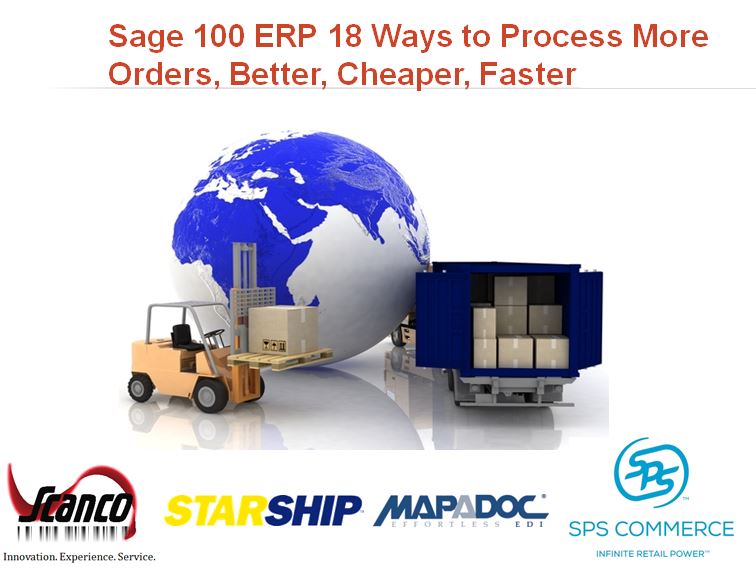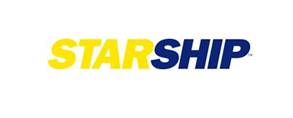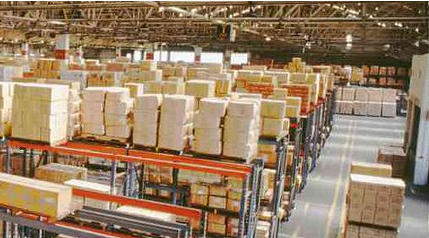1 min read
ERP VAR Reviews Sage 100 ERP Supply Chain Integrated Solution Webcast
ERP VAR Webcast Review: Sage 100 ERP Integrated Supply Chain Management Solutions ERP VAR is proud to share the success they had with a recently...
2 min read
Lloyd Smith Mon, Dec 09, 2013

 Effective warehouse management requires you to have access to real-time data and information so you can make the right decisions for your business. Over the years, warehouse management systems (WMS) have helped manufacturers and distributors gain control over the warehouse and improve their productivity rates. As warehouse management systems evolve, manufacturing and distribution companies are faced with hundreds of choices when it comes to WMS. Recent technologies such as Cloud computing, barcoding and mobility are influencing the decisions of companies when it comes to warehouse management and making it harder to choose the right solution.
Effective warehouse management requires you to have access to real-time data and information so you can make the right decisions for your business. Over the years, warehouse management systems (WMS) have helped manufacturers and distributors gain control over the warehouse and improve their productivity rates. As warehouse management systems evolve, manufacturing and distribution companies are faced with hundreds of choices when it comes to WMS. Recent technologies such as Cloud computing, barcoding and mobility are influencing the decisions of companies when it comes to warehouse management and making it harder to choose the right solution.
With so many options, how are companies supposed to know which solution is right for them? We can’t help you choose the perfect solution in this blog, but we can help you understand the differences between the available solutions so you know which warehouse management system makes more sense for your organization.
Before we begin to discuss practical ways to get the most out of your warehouse management system investment, we need to clear up some confusion regarding the functionality of warehouse management systems. As you are considering your options for a WMS application, make sure you have a clear understanding of what’s standard in WMS and what’s additional. Standard warehouse management system functionality includes: warehouse configuration, bin setup, item setup, putaways, reports, integrated WMS slotting, picking/packing, replenishment/forecasting, stock strategy, shipping, cycle counts, KPI, audit history, multi-site management, configuration, and printing interface. Additional functionality includes: RFID, robotics, external interface management, transportation management, inventory costing, inventory modeling, and supplier relationship management.
In order to choose the right solution, you need to examine the functionality your business will require and narrow down the software vendors that meet 70% of your business requirements. Once you have a list of vendors, compare costs and choose the solution you think makes the most sense for your business.
The key to getting the most out of your warehouse management system is to implement it in phases rather than all at once. Once you have determined the functionality you need and chosen your WMS solution, it’s time to create an implementation plan. Write down your most pressing business needs and install those modules first in the warehouse management system application. Keep in mind that the amount of functionality you deploy should be directly related to the amount of time the initial phase will take. Once these modules have been implemented and stabilized and your employees feel comfortable with the system, you can begin the second phase of the implementation.
Make sure that you have a specified timetable in place before you begin the implementation of your warehouse management system. When it comes to WMS implementations, it’s always best to overestimate the time it will take to deploy the system, especially if you have chosen additional requirements.
Testing is critical to the success of your WMS project. Test interfaces and data exchanges should be should be checked often to ensure transactional and data integrity. You will also need to test the entire workflow process, including the data, systems, automation, agility, and exceptions.
No matter what kind of warehouse management system you choose, proper planning, extensive testing and a phased approach to implementation will allow your company to reap the benefits of the warehouse management system for years to come. If you would like some assistance in the selection process, give Mindover Software a call today. They offer a variety of solutions, including Sage WMS and Accellos WMS, designed to help companies just like you. Their warehouse management experts can guide you through the selection process so you can begin improving your warehouse management efforts.
Photo courtesy of www.freedigitalphotos.net

1 min read
ERP VAR Webcast Review: Sage 100 ERP Integrated Supply Chain Management Solutions ERP VAR is proud to share the success they had with a recently...

1 min read
ERP VAR is proud to share the success they had with Thursday's hosted webcast with 5 leading Sage 100 ERP integrated supply chain solution...

Using the right Sage 100 ERP (MAS 90) Warehouse Management System will help you ship orders accurately and on time, reduce scrap or spoiled...